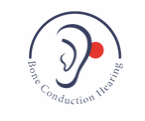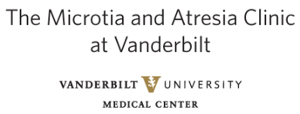Associated Terms and Definitions
Congenital Deformity – Congenital disorder or anomaly involves defects in or damage to a developing fetus. It may be the result of genetic abnormalities, the intrauterine (uterus) environment, errors of morphogenesis, infection, or a chromosomal abnormality.
Cholesteatoma – A perforation of the ear drum will generally heal without surgery. In some cases, however, instead of normally healing, the skin of the ear drum can grow through the hole into the middle ear. If infection is present, the skin will continue to grow into the middle ear and will become a tumor of the ear termed a cholesteatoma. Cholesteatomas are NOT a form of cancer. They are benign tumors. As they grow, they can look like an onion peel of white skin formed into a ball. They can destroy the bones of hearing as they grow, especially when the ear is infected or if water gets into the middle ear with other infections. Symptoms of cholesteatoma include hearing loss and recurring discharge from the ear. Pus or unpleasant smelling fluids coming from the ear are common. A surgical microscope is necessary to make a proper inspection and cleansing of the condition, especially when there is infection. A history of recurring ear infections after colds, or the entrance of water into the ear from swimming, require the ear to be examined regularly for this condition. A Cholesteatoma can be surgically removed, but may grow back again before being permanently removed.
Pinna – The pinna (Latin for feather) is the visible part of the ear that resides outside of the head (this may also be referred to as the auricle or auricula).
Tragus – is a small pointed eminence of the external ear, made of ear cartilage and is situated in front of the ear canal. Its name comes from the Greek: tragos, goat, and is descriptive of its general covering on its under surface with a tuft of hair, resembling a goats beard. Because the tragus face rearwards, it aids in collecting sounds from behind. These sounds are delayed more than sounds arriving from the front, assisting the brain to sense front vs. rear sound sources.
Stenosis – A stenosis (plural: stenoses; from Ancient Greek στένωσις, “narrowing”) is an abnormal narrowing in a blood vessel or other tubular organ or structure. It is also sometimes called a stricture (as in urethral stricture)
BAHA – A Bone-Anchored Hearing Aid is a type of hearing aid based on bone conduction. It is primarily suited to people who have conductive hearing losses, unilateral hearing loss and people with mixed hearing losses who cannot otherwise wear ‘in the ear’ or ‘behind the ear’ hearing aids. The acronym Baha is a trademark. It is suggested to refer to a BAHA as not a “hearing aid” and to use the following descriptions: bone anchored auditory device, bone anchored auditory implant, bone anchored auditory processor, or osteo-integrated bone conduction device.
Prosthetic – Craniofacial prostheses are prostheses made by individuals trained in anaplastology or maxillofacial prosthodontics who medically help rehabilitate those suffering from facial defects caused by disease (mostly progressed forms of skin cancer, and head and neck cancer), trauma (outer ear trauma, eye trauma) or birth defects (microtia, anophthalmia). They have the ability to replace almost any part of the face, but most commonly is the ear, nose or eye/eyelids.
Anaplasy – Anaplastology (Gk. ana-again, anew, upon plastos-something made, formed, molded logy-the study of) is a branch of medicine dealing with the prosthetic rehabilitation of an absent, disfigured, or malformed anatomically critical location of the face or body. The term anaplastology was coined by Walter G. Spohn and is used worldwide.
Crouzon Syndrome – is a genetic disorder where the principal symptom is premature fusion of the bones of the skull. Normally, the junctions between the bones (called “cranial sutures”) are able to move slightly, enabling the skull to flex and grow. If they fuse prematurely during fetal development, the skull is unable to grow properly. The syndrome was described in 1912 by Octave Crouzon, a French physician. It is also referred to as Crouzon’s syndrome and craniofacial dystosis. Crouzon syndrome is very similar to Apert syndrome. The major differentiator is the absence of fused hands and feet (syndactyly) and less cognitive impairment. However, since the syndromes have the same genetic cause, some physicians have suggested that they be grouped together and called Crouzon-Apert syndrome. Information on Apert syndrome is generally applicable to Crouzon syndrome, so readers should search for information using both terms.
Apert syndrome – (acrocephalosyndactyly) is a genetic disorder involving premature fusion of the bones of the skull. Normally, the junctions between the bones (called “cranial sutures”) are able to move slightly, enabling the skull to flex and grow. If they fuse prematurely during fetal development, the skull is unable to grow properly. Another major symptom of Apert syndrome is fused hands and feet. The syndrome was described in 1906 by Eugène Apert, a French physician. It is also referred to as Apert’s syndrome and acrocephalosyndactyly. Apert syndrome is similar to Crouzon syndrome, although it is more rarely diagnosed. The major differentiators are the additional presence of fused hands and feet (syndactyly) and more serious levels of cognitive impairment. However, since the syndromes have the same genetic cause, some physicians have suggested that they be grouped together and called Crouzon-Apert syndrome. Symptoms associated with Crouzon syndrome are generally also applicable to Apert syndrome, so readers should search for information using both terms.
Pfeiffer Syndrome – (first reported in 1964) is a condition resulting from premature fusion of the sutures of the skull and deformity of the skull. Characteristics include:
* skull is prematurely fused and unable to grow normally (craniosynostosis)
* bulging wide-set eyes due to shallow eye sockets (occular proptosis)
* underdevelopment of the midface
* broad, short thumbs and big toes
* possible webbing of the hands and feet
Klippel-Feil Syndrome – is a rare disorder characterized by the congenital fusion of any 2 of the 7 cervical (neck) vertebrae. It is caused by a failure in the normal segmentation or division of the cervical vertebrae during the early weeks of fetal development. The most common signs of the disorder are short neck, low hairline at the back of the head, and restricted mobility of the upper spine. Associated abnormalities may include scoliosis (curvature of the spine), spina bifida (a birth defect of the spine), anomalies of the kidneys and the ribs, cleft palate, respiratory problems, and heart malformations. The disorder also may be associated with abnormalities of the head and face, skeleton, sex organs, muscles, brain and spinal cord, arms, legs, and fingers.
Charge Syndrome – (CHARGE Syndrome) is a recognizable (genetic) pattern of birth defects which occurs in about one in every 9-10,000 births worldwide. It is an extremely complex syndrome, involving extensive medical and physical difficulties that differ from child to child. The vast majority of the time, there is no history of CHARGE syndrome or any other similar conditions in the family. Babies with CHARGE syndrome are often born with life-threatening birth defects, including complex heart defects and breathing problems. They spend many months in the hospital and undergo many surgeries and other treatments. Swallowing and breathing problems make life difficult even when they come home. Most have hearing loss, vision loss, and balance problems which delay their development and communication. All are likely to require medical and educational intervention for many years. Despite these seemingly insurmountable obstacles, children with CHARGE syndrome often far surpass their medical, physical, educational, and social expectations.
Nager and Miller Syndrome – (postaxial acrofacial dysostosis) is an extremely rare genetic condition that involves multiple physical anomalies. Facial characteristics include downward slanting palpebral fissures (eyelids), the absence of a portion of the lower eyelid and or eyelashes, cleft palate, recessed lower jaw, small cup shaped ears, and a broad nasal ridge. Mild to severe hearing loss is usually noted and therefore repeated BAER hearing tests may be indicated to diagnose this hearing loss. The hallmark of Miller Syndrome is the absence or malformation of the fifth digits, often involving both the hands and the feet. Limb anomalies include shortened and bowed forearms, incompletely developed ulnar and radius bones, missing or webbed fingers and toes, as well as abnormal growth of the tibia and fibula bones (lower legs). Occasional anomalies include heart defects including but not limited to ventricular septal defects. Additionally, lung disease from chronic infection, extra nipples, upper g.i. reflux and or kidney reflux can be present. Males often if not always have undescended testicles while females may have uterine anomalies. Easily dislocated hips can be another issue faced by people with Miller Syndrome. Furthermore most affected children suffer with difficult venous (vein) access. Some mothers have been shown to have extra amniotic fluid during pregnancy, when carrying a child with Miller Syndrome. Medical intervention is usually required at birth to aid in breathing due to the narrow airway, recessed lower jaws. Clefting of the hard and or soft palate difficulty breathing and swallowing usually means that feeding will be an issue. The severity of this syndrome varies widely. There have been fewer than 75 documented cases of Miller Syndrome world wide. The inheritance pattern is believed to be autosomal recessive, which means that each parent is a carrier of this recessive gene.
The above is all generalized information pulled from the following website sources:
- http://www.fnms.net/about-miller-syndrome
- http://www.earsurgery.org/site/pages/conditions/cholesteatoma.php
- www.earsurgery.org
- http://www.atresiarepair.com/faqs/can-the-outer-ear-and-canal-be-done-at-the-same-time









Leave a Comment
You must be logged in to post a comment.